| 1 | No living relatives |
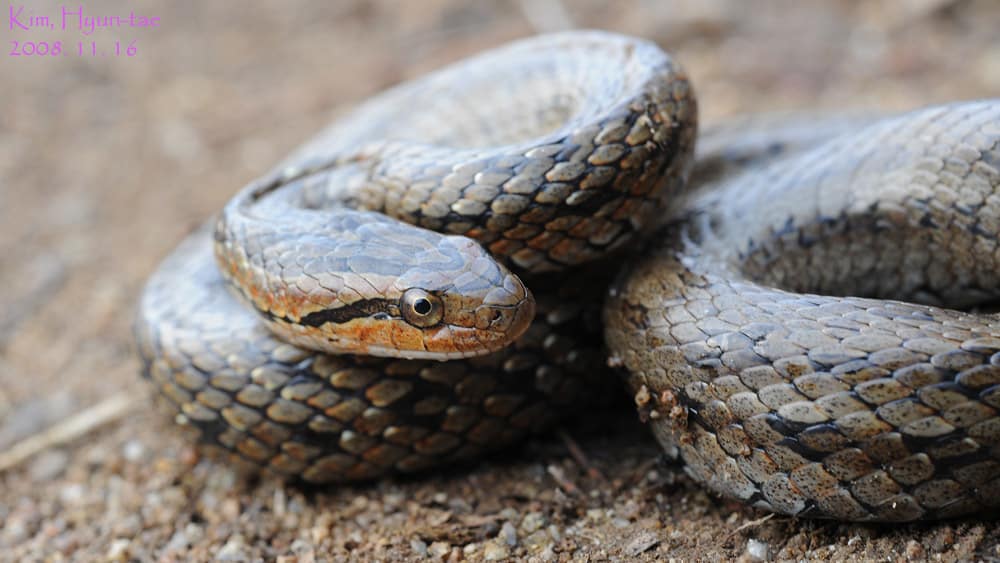
The Chinese garter snake (Oocatochus rufodorsatus) is a non-venomous snake found in China, South Korea, and far eastern Russia. It’s a snake of various names, including Chinese corn snake, red-backed ratsnake, and Chinese frog-eating snake. All these names have a grain of truth – this species does eat frogs, it does have a red back, and it does inhabit China. The confusion stems from the fact that this snake is an oddball on the evolutionary tree, with no close living relatives.
Despite being dubbed a ratsnake, this snake is the sole member of the Oocatochus genus. While technically part of the wider ratsnake family, they’re the only ratsnake worldwide to lay live young. Their behaviour is more like the garter snakes of the USA, as both are semi-aquatic water lovers which prey on frogs and have a docile personality, yet the two are only distantly related.
Oocatochus rufodorsatus is a complete anomaly in the snake world. Despite this, it’s a common snake in its east Asian ranges. It alternates between ponds and the dry land adjacent to them, occasionally climbing trees to bask in the sun’s warmth.
With their bright orange patches, it’s easy to spot a Chinese garter snake weaving through a pond, patrolling its countryside domain. They often rest on floating water plants, and are only ever found in rural spots, never towns or cities.
| 2 | A far eastern snake |
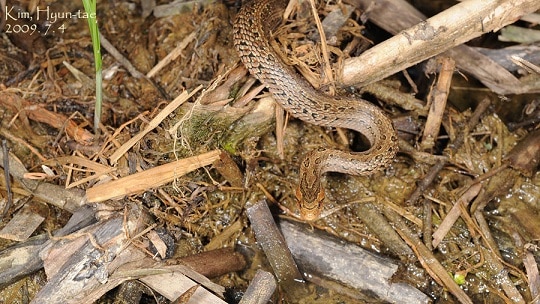
Oocatochus rufodorsatus is an east Asian snake, inhabiting far eastern Russia, eastern China and the entire Korean peninsula. Though never witnessed, it’s inevitable that this species has slithered quietly past sleeping Ussuri brown bears, or through the feet of an Amur tiger preparing for a lethal pounce.
This is a day-faring snake rather than nocturnal, dividing its time neatly between the ground and water bodies, with ponds being its favourite, and wetlands adjacent to lagoons. Oocatochus rufodorsatus is also found in forest, but mainly low-lying floodplain forests rather than dense, bushy ones. They can also be found in thickets on the shores of lakes.
In certain spots, they can be extremely abundant. In Russia’s Far Eastern Marine Biosphere Reserve, located north of the sea of Japan, 100-120 Oocatochus rufodorsatus were found to exist per kilometre. In Khasansky District, eastern Russia, 11 were found along a 100 metre stretch of lake shore, one snake every 9.09 metres. Oocatochus rufodorsatus are non-venomous, and have never killed a human in recorded history.
| 3 | Common in rice fields |
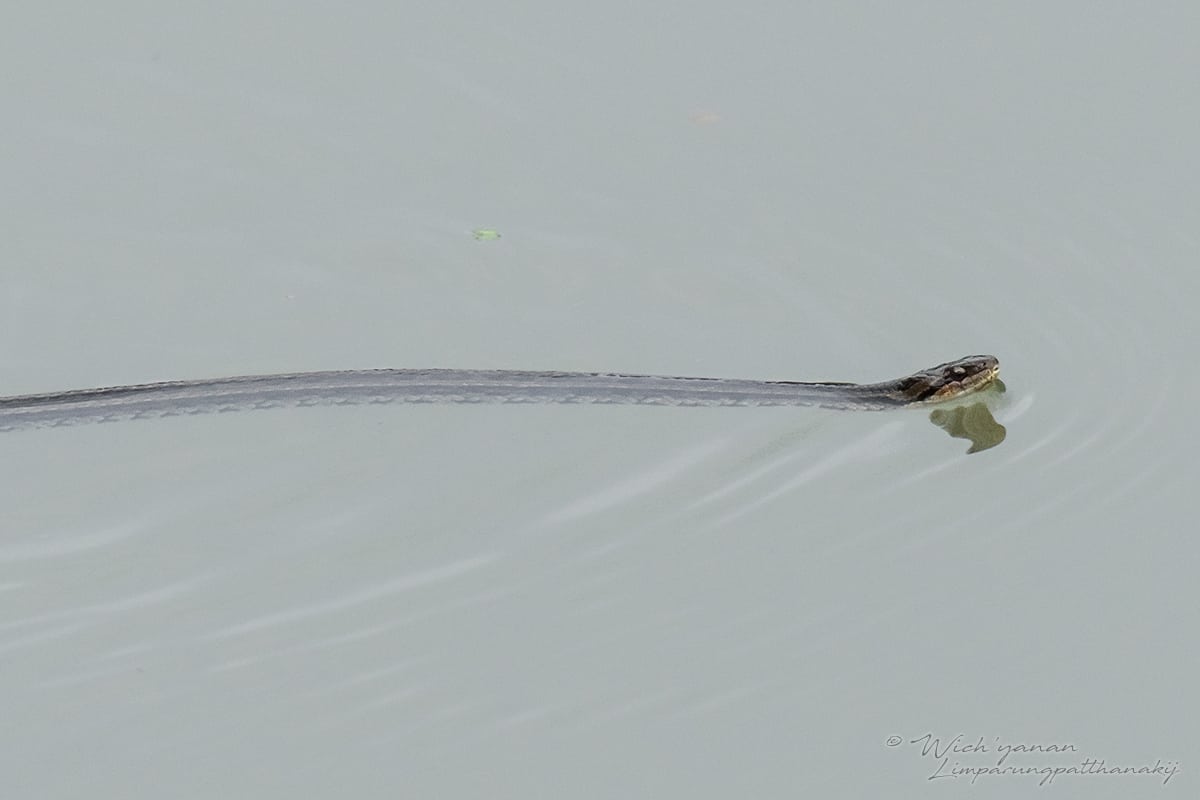
Chinese garter snakes are rarely kept in captivity. Keepers believe that they’re far rarer on the global snake market than they used to be, but this is a good thing. A 2015 survey covering eastern Asia gave this verdict: “Recently recorded in the international pet trade but volumes are likely to be very small“. It was deemed to be safe from exploitation, while one of the most endangered snakes was Moellendorff’s rat snake, due to its beautiful skin, sought after for making handbags.
Nevertheless, despite being regarded as “least concern” by IUCN, Oocatochus rufodorsatus is gradually becoming harder to find in Korea. Water pollution is the primary culprit, as the spread of mankind becomes harder to contain. 100 years ago, larger swathes of Korea consisted of wetlands, but with modern agriculture taking over, many perfect habitats for Oocatochus rufodorsatus have been lost. However, they thrive in certain manmade habitats, particularly rice paddies which are seasonally flooded, or lightly managed crop fields bordered by streams and ponds.
| 4 | Loves lagoon edges |
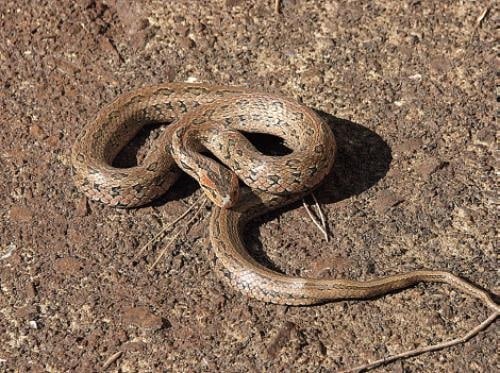
Korea is the main heartland of this oddball snake. A 2010 study identified 16 lagoons along Korea’s eastern coastline, and found that the most abundant amphibian was the black-spotted pond frog. The most abundant reptile in the swamps was the invasive red-eared turtle, but the most abundant native reptile (second overall) was Oocatochus rufodorsatus, which was found in 10 of 16 lagoons. The turtle was most common in the centre of the lagoons, while Chinese garter snakes preferred wetlands along the edges, and were common in adjacent rice paddy fields.
The second most common snake was the venomous tiger keelback, which was often found in the same lagoons as Oocatochus rufodorsatus. In third place was the steppe ratsnake, AKA Elaphe dione.
Unfortunately, Chinese garter snakes have no immunity to the grisly fate of roadkill. They’re a moderately adventurous snake, yet not particularly fast-moving (unlike the caffeinated speed of a golden tree snake), a nasty combination when crossing busy roads.
In 2022, scientists decided to use the iNaturalist website, which nature enthusiasts from across the globe can upload photos to, as a way to analyse roadkill deaths in Korea. Of 11 snake species included, Oocatochus rufodorsatus ranked second, with 48 roadkill deaths observed. The tiger keelback ranked in first with 73 deaths, and in third was the Dione ratsnake (43 deaths).
| 5 | Varies from amber to black |
Chinese garter snakes have variable colours. Some have alternating beige and black tones comparable to a viper (which they’re probably imitating for protection), while others have the signature orange patches in full force. Their patterns are also more complicated than average. Some have parallel black and brown stripes, running down the entire body and fusing with a black line behind the eye. Some snakes have broken blotches, or small circles, while others combine the two, with the stripes mutating into blotches around the torso.
Oocatochus rufodorsatus have an amber orange iris, with a black round pupil. Their head looks triangular from above, which may be another viper mimicking strategy. Some Chinese garter snakes are far darker than others, which absorbs the patterns and makes them more muted. Others are paler, looking dried out and crusty like they’ve been left in the sun for too long.
Oocatochus rufodorsatus has a jet black tongue, but a pink inside of the mouth. Its garter snake “cousins” have a pink tongue, with a black tip.
| 6 | Moves 17 metres daily |
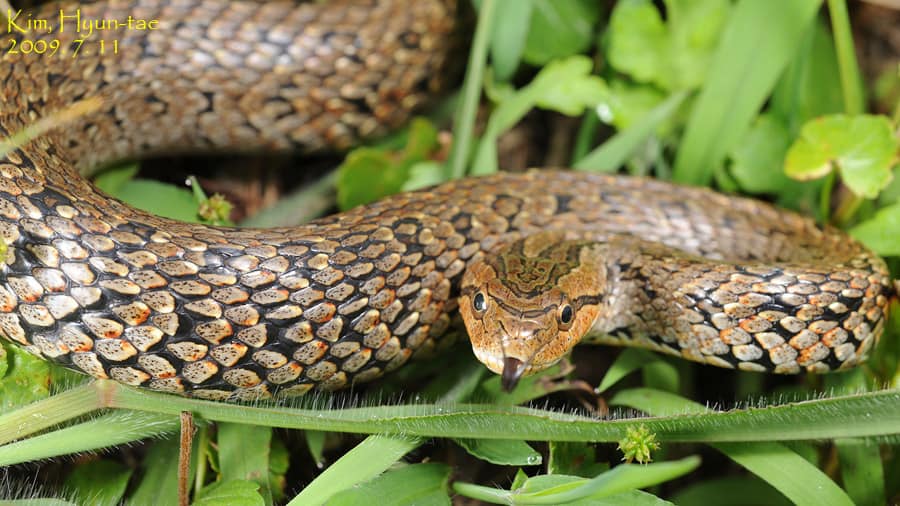
A 2011 study followed Chinese garter snakes for 1070 days, surgically implanting trackers into their abdomen, which they followed with a radio device armed with an antenna. The scientists were armed with a tape measure 50 metres long, and followed 21 snakes on foot, laboriously calculating the exact coordinates of each snake per day.
The study took place in a series of agricultural fields within mountains, including rice paddies bordered by ponds. Before this, nobody knew much about the species’ lifestyle, but it turned out that Oocatochus rufodorsatus moved 17 metres per day on average, not too lazy, but not too hyperactive either. They moved significantly less than the northern watersnake of the USA, which averages at 40-50 metres.
The snakes were found in ponds or near wetlands 94.3% of the time. They averaged at 10.3 metres away from water, within easy reach of the frog buffet they instinctively know they need. Males and females stayed similar distances from water, but after giving birth, females became much more adventurous, venturing to 20 metres away from water versus 5 metres beforehand.
| 7 | Always found near water |
Many of the females gave birth during the study, the earliest date being August 13th, and the latest September 9th. The female snakes were heavier than the males, both before and after giving birth. Pregnant females spent far more time in trees, as this was the optimal location for warming their bodies and unborn children. This species pumps out 7-24 hatchlings, and commonly forms a breeding ball – when many males chaotically dogpile a single female in order to become the chosen mate.
The study also unlocked their exact nature as a semi-aquatic snake. The majority of their time was spent on the ground close to ponds. At 12:00-14:00pm, the vast majority of sightings were on the ground. But at 18:00-20:00pm, water took over, the stretching shadows making ponds more attractive for them somehow. At 21:00-22:00pm, the vast majority of sightings were in water bodies such as ponds.
| 8 | The last minute hibernation dash |
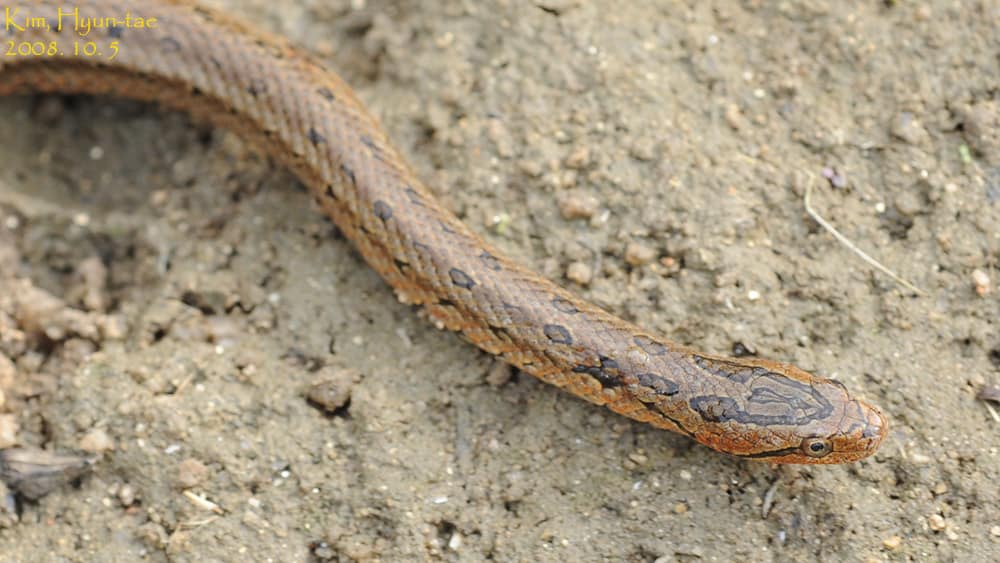
The least aquatic time of the year for Oocatochus rufodorsatus is winter, when they leave their beloved wetlands and move to dry land to hibernate. As they sense the sun dimming, the temperature falling and frost taking control, Chinese garter snakes instinctively realise that it’s time to get moving. They move an average of 94.4 metres away from the shoreline to find a winter den. These are almost always on south to southeast facing slopes in order to maximum warmth, to absorb every last ray of the weak winter sunlight.
They normally select drier spots, and some snakes are particularly ambitious; one moved 397 metres to find a hibernation den. If you’re in South Korea and you see a huge crowd of this snake leaving a pond and slithering up a hill, now you know why.
This winter migration is partly why Oocatochus rufodorsatus disappears when heavy, grinding agriculture moves in. They need not just ponds and wetlands, but a ring of drier natural habitat surrounding them, to form a bountiful line of hibernation sites to choose from.
| 9 | 21st century enemy – bullfrogs |
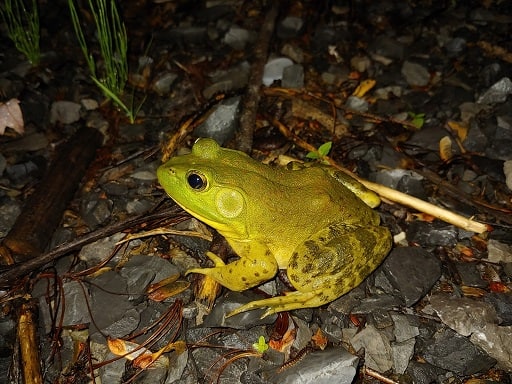
Korea has recently been invaded by a plague of American bullfrogs, which are native to the USA but now reside in over 40 countries, where their thuggish ways often outcompete the humble native frogs. Being a frog-lover, this invasion has had several effects on the Chinese garter snake.
For one thing, they’re competitors in the hunt for food. One of Oocatochus rufodorsatus’ top prey in Korea is the black spotted pond-frog, which has been found to become scarcer when greedy American bullfrogs arrive.
However, adult Chinese garter snakes also prey on American bullfrogs. They’re a tougher meal to get down, taking longer to swallow than native frogs. American bullfrogs are also faster and escape more aggressively, and this has forced the local Oocatochus rufodorsatus to adapt: they’ve grown longer tails. A faster tail gives semi-aquatic snakes more explosive chasing speed, increasing propulsive force and balance.
The Oocatochus rufodorsatus exposed to bullfrogs also had a faster reaction to prey. They flecked their tongues faster, with less gaps between the flecks. The scientists theorised that either 1) the bullfrogs had forced them to be more aggressive by reducing their native prey, or 2) that they actually preferred the taste of bullfrogs and were more motivated to seek them out. Overall, adding bullfrogs to an area made the local Oocatochus rufodorsatus more efficient predators, compared to areas with no bullfrogs.
| 10 | Diet: prefers frogs and fish |
Chinese garter snakes are a rare sight in snake enclosures, with many countries having none in captivity at all. Their addiction to frogs is one obstacle. Oocatochus rufodorsatus are very stubborn about their liking for frogs, but will also swallow up fish, and hairless pinkie mice. However, keepers testify that they strongly dislike rodents and will only eat them if fooled with artificial scenting.
One recommendation for feeding is the golden tree frog, which isn’t a native, but is easily affordable and available for keepers. The fact that Oocatochus rufodorsatus eats American bullfrogs shows that they happily eat non-native species.
Supposedly, Chinese garter snakes are very attuned to the flopping movements of fish, as though breaking the surface of a pool briefly. Should you flop a mouse around, they’ll be more likely to strike eagerly, but unfortunately the same applies to your fingers wiggling around. A container with water is important, which they spend a large portion of the time relaxing in, but like the US garter snakes they parallel, Oocatochus rufodorsatus will also climb up and bask on low “branches”, so it’s important for containers to have raised areas.
